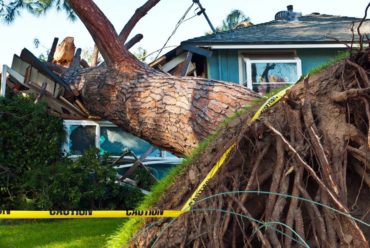 When a natural disaster strikes, moving your family to immediate safety is always the top priority, which means there is often little time to think about the financial details that can make the recovery process go smoothly. That’s why it’s crucial to be proactive and prepared for whatever comes your way. Yet only 39 percent of respondents in a FEMA survey say they have developed an emergency plan and discussed it with their households.
When a natural disaster strikes, moving your family to immediate safety is always the top priority, which means there is often little time to think about the financial details that can make the recovery process go smoothly. That’s why it’s crucial to be proactive and prepared for whatever comes your way. Yet only 39 percent of respondents in a FEMA survey say they have developed an emergency plan and discussed it with their households.
“Disasters occur during every season and on all different scales,” says Rullah Price, senior vice president and community outreach director with Wells Fargo Home Lending. “That is why being prepared is so critical in today’s environment.”
Wells Fargo is offering the following tips to help plan in advance for worst-case scenarios:
Documents: Save important financial documents, such as birth and marriage certificates, wills, deeds, tax returns, insurance policies and stock and bond certificates, on a thumb drive. These records are often needed for tax and insurance purposes.
Written records: Make a visual or written record of your possessions, including cars, boats and recreational vehicles. Or, use an inventory booklet and make a simple list.
Visual records: Photograph your home exterior, including landscaping, making special note of any improvements, such as a patio, fencing or outbuildings, as these may increase property value.
Online access: Consider setting up online banking, mobile banking, bill pay and electronic account alerts. This will help you stay on top of your accounts and bills if you’re displaced from your home.
Emergency funds: Have cash on hand or an emergency fund. A disaster can shut down local ATMs and banks. After a disaster, you may need cash for the first few days, or even several weeks.
It is important to know that when a disaster is approaching, many financial institutions will send updates via various channels to customers who might be impacted. This helps pave the way for a speedy recovery.
After a disaster, wait until it’s safe to return to your property. Then, assess for damage, including your automobiles. Call your lender and insurance company to file a claim as soon as possible if you have sustained damages.
It is also helpful to know in advance if and what resources your financial institutions provide. For example, Wells Fargo customers — including those with home mortgages, home equities and auto loans — can contact 800-TO-WELLS or visit wellsfargo.com/recovery.
Don’t wait until disaster is at your doorstep to plan. Preparation today can pave the way for a smoother financial recovery process in the wake of a natural disaster or emergency scenario.












Comments